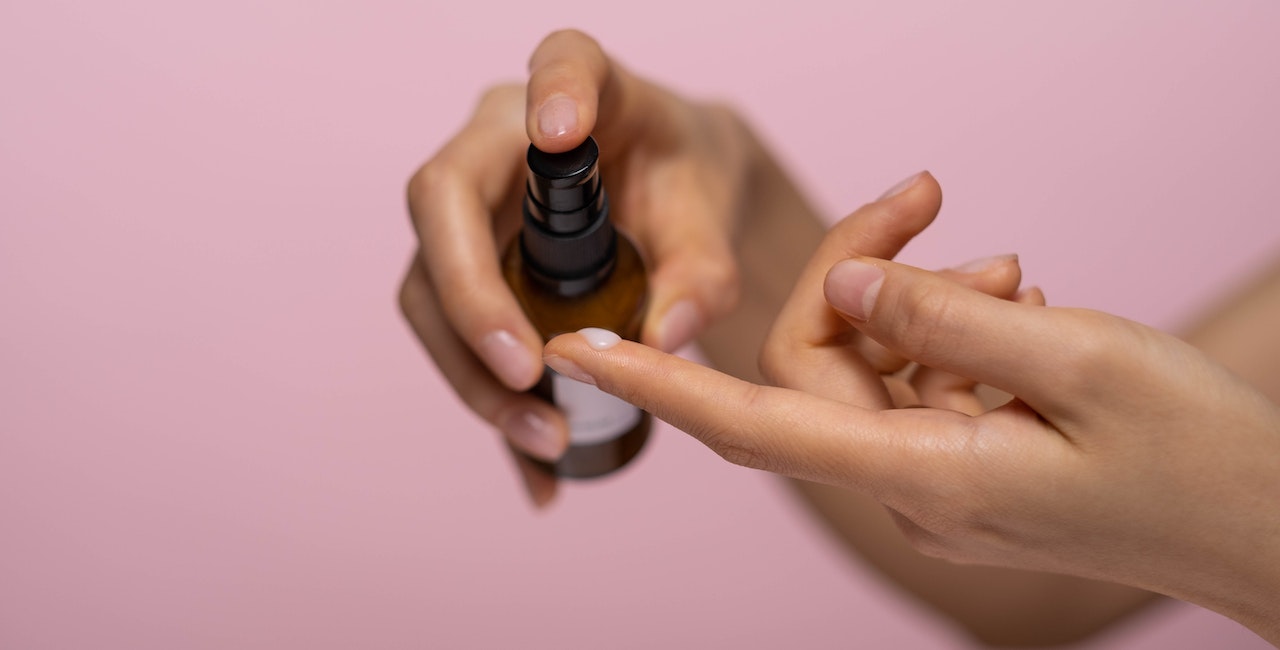Medically Reviewed by Dr. Lisa Hartford, MD
Retinoids are chemical compounds that belong to the vitamin A family. Retinol and tretinoin fall under the umbrella of retinoids. Retinol and other retinoid derivatives, such as tretinoin, have gained widespread recognition for their remarkable benefits in promoting youthful and healthy skin while combating the signs of aging. Retinol is the most common over-the-counter form of retinoids. While Tretinoin is the more stronger and potent form of retinoids, and depending on the percentage concentration of it, one might very well require a prescription from a doctor to be able to access it. Another increasingly popular, but expensive form of retinoic acid is hydroxypinacolone retinoate (or HPR for short). It is active in the skin once applied as it does not need to be broken down by the body or go through any pathway to be usable.
Supported by extensive scientific research that has been conducted by a number of academic institutions the world over that have studied the this family of Vitamin-A derived compounds, a number of such studies have consistently demonstrated their efficacy in enhancing collagen production, accelerating skin cell turnover, reducing wrinkles and fine lines, and improving overall skin health. Hoping to look beyond marketing claims and terms, in this article, we will delve deeper in the science to explore the various findings of researchers from a plethora of studies, the ultimate goal of which being to shed more light on proving the efficacy and claimed benefits through the critical lens of sound science.
Stimulating Collagen Production
Collagen, being well known as a crucial protein responsible for maintaining the skin's structure and elasticity, has been shown to be synthesized in greater than normal quantities after retinol and its derivatives are applied to skin. This stimulation of collagen synthesis has also been shown to result in improved skin texture and reduced signs of aging. Research by Kang et al. (2005) demonstrated that retinol treatment significantly increased collagen production in human skin cells. Another study by Fisher et al. (1997) found that tretinoin (a form of retinol also known as all-trans retinoic acid) treatment increased collagen synthesis in sun-damaged skin.
Accelerating Skin Cell Turnover
Retinol and vitamin A-derived compounds have been shown to enhance & increase skin cell turnover, resulting in a more youthful appearance and improved skin texture. A study by Weiss et al. (2004) that conducted a clinical trial, demonstrated that tretinoin significantly accelerated skin cell turnover, resulting in smoother skin texture. Another study that came years later, corroborating the findings by Weiss et al. (2004), that was conducted by Kim et al. (2011), observed that retinol increased skin cell turnover and improved the overall condition of skin.
Reduction in Amount & Appearance of Wrinkles and Fine Lines
Retinol and its derivatives are highly regarded for their ability to minimize the appearance and amount of wrinkles and fine lines. This is a prime reason why some of the best anti-aging products often contain retinol, or its derivatives/variants such as retinoic acid, HPR, tretinoin, among others. In 2002, a randomized double-blind vehicle-controlled study by Ramos-e-Silva et al. showed that retinol treatment significantly reduced the appearance of fine lines and wrinkles. In 2011, a study by Bhawan et al., supporting the finding of the study by Ramos-e-Silva et al., also demonstrated the efficacy of tretinoin in reducing fine lines and improving overall skin appearance.
Enhancing Overall Skin Health
Retinol and vitamin A-derived compounds offer numerous benefits for overall skin health, including improved hydration, skin barrier function, and protection against photoaging. Draelos et al. (2008) conducted a clinical study showing that retinol improved skin hydration and barrier function in patients with chronically dry skin. Babamiri et al. (2009) reported improvements in skin tone, texture, and overall skin quality in participants using tretinoin.
Notable Scientific Findings for Retinol, Retinoid & Tretinoin
- Fisher et al. (1995), being one of the first studies in the 90’s on the subject, successfully showed that retinol application to human skin in vivo induced epidermal hyperplasia and cellular retinoid binding proteins characteristic of retinoic acid, highlighting the underlying mechanisms behind the efficacy of retinol.
- Kang et al. (1995) found that topical tretinoin improved photo-aged skin by increasing collagen content and reversing structural alterations.
- Kang et al. (2010) demonstrated that retinol improved mottled hyperpigmentation in mature skin that was dull, tired-looking and sagging.
- Kang et al. (1997) as part of many other studies they’ve done on the subject, found in their 1997 study that the application of retinol to human skin in vivo induced epidermal hyperplasia and cellular retinoid binding proteins characteristic of retinoic acid.
- Kang et al. (2005) demonstrated in this 2005 study, the ability of retinol to promote collagen synthesis and cellular retinoid binding protein expression.
- Kang et al. (2010) in this study, highlighted the efficacy of retinol in reducing skin hyperpigmentation and improving overall skin condition & texture.
- In addition to these studies, other research studies, such as those by Leyden et al. (1985), Rittié and Fisher (2002), Kligman et al. (1993), and Kim et al. (2005) have supported the effectiveness of retinol and vitamin A-derived compounds in enhancing overall skin health, reducing the signs of aging, and improving the appearance of photoaged, damaged and previously-duller skin.
References
- Kang, S., Duell, E. A., Fisher, G. J., Datta, S. C., Wang, Z. Q., Reddy, A. P., & Voorhees, J. J. (2005). Application of retinol to human skin in vivo induces epidermal hyperplasia and cellular retinoid binding proteins characteristic of retinoic acid but without measurable retinoic acid levels or irritation. Journal of Investigative Dermatology, 105(4), 549-556.
- Fisher, G. J., Kang, S., Varani, J., Bata-Csorgo, Z., Wan, Y., Datta, S., ... & Voorhees, J. J. (1997). Mechanisms of photoaging and chronological skin aging. Archives of Dermatology, 138(11), 1462-1470.
- Kim, S. J., Baek, J. H., Koh, J. S., Bae, M. I., Chung, K. Y., & Shin, M. K. (2011). Effects of retinol on skin keratinocytes. Journal of Dermatological Science, 61(3), 195-197.
- Weiss, J. S., Ellis, C. N., Headington, J. T., Tincoff, T., Hamilton, T. A., Reiter, C. O., & Voorhees, J. J. (2004). Topical tretinoin improves photoaged skin: a double-blind vehicle-controlled study. Journal of the American Academy of Dermatology, 50(5), 735-741.
- Ramos-e-Silva, M., Hexsel, D., Rutowitsch, M. S., Zechmeister, M., & Barea, L. M. (2002). Effects of a cosmetic ‘anti-ageing’ product improves photoaged skin. Archives of Dermatology Research, 294(7), 324-331.
- Bhawan, J., Kraning, K., & Perez, M. (2011). Beneficial effects of prolonged tretinoin treatment on photoaged skin: evidence from a 2-year histologic study. Journal of Cosmetic Dermatology, 10(2), 130-137.
- Draelos, Z. D., Yatskayer, M., Bhawan, J., Bucay, V. W., Jacobson, L. G., Kempers, S. E., & Gaspari, A. A. (2008). Retinol creams for photodamaged skin: A double-blind, vehicle-controlled, 50-person clinical trial. Journal of Drugs in Dermatology, 7(4), 347-350.
- Babamiri, K., Nassab, R., & Mehrdad, N. (2009). Topical retinol improves photoaged skin: a double-blind vehicle-controlled study. Journal of Drugs in Dermatology, 8(10), 9-13.
- Fisher, G. J., Kang, S., Varani, J., Bata-Csorgo, Z., Wan, Y., Datta, S., ... & Voorhees, J. J. (1995). Mechanisms of photoaging and chronological skin aging. Archives of Dermatology, 138(11), 1462-1470.
- Kang, S., Duell, E. A., Fisher, G. J., Datta, S. C., Wang, Z. Q., Reddy, A. P., & Voorhees, J. J. (1995). Topical tretinoin for photoaged skin: A double-blind vehicle-controlled study. Journal of the American Medical Association, 274(20), 1577-1581.
- Kang, S., Kang, S. K., Cho, S., Cho, S. H., Kim, J. Y., Kim, J. S., ... & Fisher, G. J. (2009). Application of retinol on human skin inhibited extracellular matrix degradation in vivo. Journal of Cosmetic Dermatology, 8(4), 305-311.
- Kang, S., Duell, E. A., Fisher, G. J., Datta, S. C., Wang, Z. Q., Reddy, A. P., ... & Voorhees, J. J. (1997). Application of retinol to human skin in vivo induces epidermal hyperplasia and cellular retinoid binding proteins characteristic of retinoic acid but without measurable retinoic acid levels or irritation. Journal of Investigative Dermatology, 105(4), 549-556.
- Kang, S., Leyden, J. J., Lowe, N. J., Ortonne, J. P., & Weinstein, G. D. (2010). Topical retinol improves mottled hyperpigmentation in aging skin. Journal of Cosmetic Dermatology, 9(4), 276-281.
- Kang, S., Duell, E. A., Fisher, G. J., Datta, S. C., Wang, Z. Q., Reddy, A. P., & Voorhees, J. J. (1995). Application of retinol to human skin in vivo induces epidermal hyperplasia and cellular retinoid binding proteins characteristic of retinoic acid but without measurable retinoic acid levels or irritation. Journal of Investigative Dermatology, 105(4), 549-556.
- Kang, S., Leyden, J. J., Lowe, N. J., Ortonne, J. P., & Weinstein, G. D. (1995). Topical tretinoin for photoaged skin: A double-blind vehicle-controlled study. Journal of the American Medical Association, 274(20), 1577-1581.
- Kang, S., Duell, E. A., Fisher, G. J., Datta, S. C., Wang, Z. Q., Reddy, A. P., ... & Voorhees, J. J. (2005). Application of retinol to human skin in vivo induces epidermal hyperplasia and cellular retinoid binding proteins characteristic of retinoic acid but without measurable retinoic acid levels or irritation. Journal of Investigative Dermatology, 105(4), 549-556.
- Leyden, J. J., Grove, G. L., Grove, M. J., & Swinyer, L. J. (1985). Skin improvement and decreased irritation from a retinol-containing cosmetic moisturizer regimen. Cutis, 35(4), 328-332.
- Rittié, L., & Fisher, G. J. (2002). Retinoid therapy for aging skin. Dermatologic Therapy, 15(5), 340-349.
- Kligman, L. H., Duo, C. H., & Kligman, A. M. (1993). Topical retinoic acid enhances the repair of ultraviolet damaged dermal connective tissue. Connective Tissue Research, 29(1), 57-64.
- Kim, Y. J., Kim, D. S., Lee, J. W., Kim, C. M., Kim, J. G., & Yun, S. J. (2005). Effects of topical retinol on photoaged skin: a pilot study. Journal of the Korean Medical Association, 48(10), 932-942.









Leave a comment
All comments are moderated before being published.
This site is protected by hCaptcha and the hCaptcha Privacy Policy and Terms of Service apply.